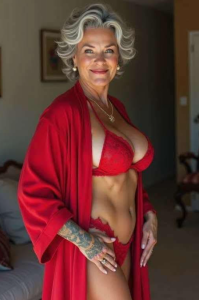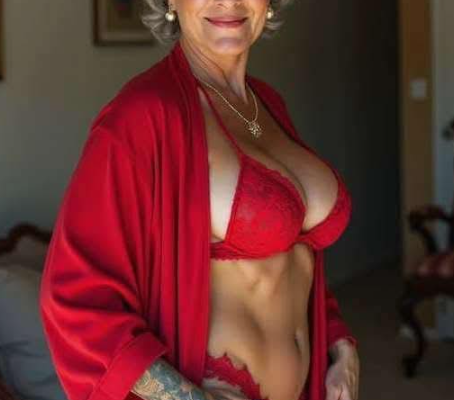Older Women Are Embracing Back-Aligned Comfort — and It’s Changing Their Lives
In recent years, conversations about health, aging gracefully, and sustainable well-being have shifted dramatically. Among these, one trend is quietly but powerfully reshaping the lives of many older women: the embrace of back-aligned comfort. From orthopedic chairs to supportive footwear, posture-focused yoga, and ergonomically designed clothing, the idea is simple but transformative—aligning the spine and caring for the back can profoundly impact not just physical health, but emotional and social well-being too.
The Silent Struggle with Back Pain
Back pain has long been one of the most common health issues among older adults, particularly women. Statistics show that women are more likely than men to experience chronic lower back pain, often due to factors like osteoporosis, hormonal changes after menopause, or years of physically demanding caregiving roles.
For decades, many women accepted back pain as just another part of aging. They endured sleepless nights, stiffness in the morning, and the frustrating limitations it placed on activities they once loved. For some, even simple joys like gardening, dancing, or playing with grandchildren became challenges.
But today, more women are rejecting the notion that suffering is inevitable. Instead, they are turning toward holistic solutions centered on back alignment and comfort—a movement that emphasizes prevention, posture, and practical lifestyle changes.
From Pain Management to Empowerment
The shift began quietly with physical therapy programs and ergonomic recommendations from doctors, but it has grown into a larger lifestyle movement. Women are not just treating pain; they are reclaiming comfort, mobility, and independence.
-
Ergonomic Seating: Recliners with lumbar support, adjustable office chairs, and even back-friendly cushions are becoming essentials in many households. Older women report that simply switching their seating arrangements has reduced pain dramatically.
-
Supportive Footwear: Gone are the days when style meant sacrificing comfort. Brands now design chic shoes with arch and heel support, helping to realign the body from the ground up.
-
Back-Friendly Clothing: Some companies now offer clothing designed with posture-correcting elements—lightweight bands, strategically placed seams, and fabrics that gently encourage upright positioning.
What’s remarkable is not just the physical relief these changes bring but the sense of empowerment. Women who once felt sidelined by discomfort are now finding themselves more active, social, and confident.
The Role of Posture in Confidence
Posture has long been associated with confidence, presence, and even perceived youthfulness. A woman standing tall, shoulders back, and spine aligned not only feels better physically but often exudes greater assurance in social settings.
Older women who embrace back alignment often speak of a renewed sense of dignity. They no longer hunch forward in pain or fatigue but instead carry themselves with energy and poise. This change resonates deeply, especially in cultures where women often feel invisible as they age. Back-aligned comfort, in a sense, gives them their presence back.
Stories of Transformation
Consider Maria, a 68-year-old grandmother who used to avoid outings because prolonged sitting aggravated her back pain. After investing in posture-focused physical therapy and switching to ergonomic chairs, she now attends family gatherings without fear of pain cutting her day short.
Or take Linda, a 72-year-old retired teacher who discovered yoga for spinal alignment. She describes the experience as life-changing, saying, “I feel like I have reclaimed a part of myself. My back no longer controls me—I control it.”
These stories are becoming increasingly common. Each narrative points to the same truth: aligning the back doesn’t just heal the body; it restores confidence and joy in everyday living.
The Science Behind Alignment
Medical experts support this movement, noting that the spine is central to nearly every aspect of physical function. When aligned properly:
-
Pressure on nerves is reduced, decreasing pain.
-
Blood circulation improves, fueling the body with oxygen.
-
Balance and stability are enhanced, reducing the risk of falls.
-
Energy levels rise, as the body no longer expends effort compensating for poor posture.
Moreover, alignment doesn’t just help the back—it benefits the whole body. From digestion to breathing, many systems function more efficiently when the spine is in its natural position.
Emotional and Social Benefits
Beyond the physical advantages, embracing back-aligned comfort has deep psychological effects. Pain and discomfort can lead to social withdrawal, anxiety, and even depression. By contrast, women who reduce pain and move more freely often report:
-
Improved mood and outlook: Less pain means fewer barriers to enjoying life.
-
Increased social activity: Attending clubs, classes, or simple coffee meetups becomes easier and more enjoyable.
-
Restored intimacy: Some women even report that improved mobility has helped them reconnect physically and emotionally with their partners.
This ripple effect demonstrates that back-aligned living is not just about medical wellness but about holistic well-being—physical, mental, and social.
Fashion Meets Function
Interestingly, the fashion world is also taking note of this trend. Designers are increasingly blending style with function to create clothing and accessories that support alignment without sacrificing aesthetics. From posture-correcting bras to elegant orthotic shoes, older women now have options that feel empowering rather than restrictive.
This shift marks a departure from the old assumption that functional clothing had to be dull or clinical. Instead, women can choose items that reflect both their personal style and their commitment to comfort.
A Growing Community Movement
What began as individual solutions has blossomed into a community-driven conversation. Online groups, local wellness workshops, and posture-focused yoga classes are bringing older women together. These communities provide encouragement, share product recommendations, and celebrate progress.
In many ways, this collective movement toward back-aligned living has become not only about health but also about solidarity and support. Women cheer each other on as they share success stories, reinforcing the message: “We don’t have to accept pain as the price of aging.”
Looking to the Future
As the population ages, the demand for back-aligned products, programs, and communities is expected to grow. Healthcare providers are likely to incorporate more posture education into routine care, while technology companies may develop smart clothing and wearable devices to track and improve alignment.
Most importantly, the cultural shift is likely to deepen. Aging is being redefined—not as a slow decline into limitation, but as an opportunity to continue thriving, supported by science, community, and a refusal to settle for discomfort.
Conclusion
The embrace of back-aligned comfort represents more than a trend—it is a revolution in how older women approach aging. By prioritizing posture, comfort, and holistic well-being, they are rewriting the story of later life.
Instead of shrinking into the background, these women are standing taller—literally and figuratively. They are proving that alignment of the spine can align the soul, restoring confidence, dignity, and joy. In choosing comfort, they are not retreating from life, but leaning into it more fully than ever before.
For countless women, the shift to back-aligned living is not just about relief from pain; it’s about reclaiming their vitality, embracing their beauty, and living each day with strength and grace.




